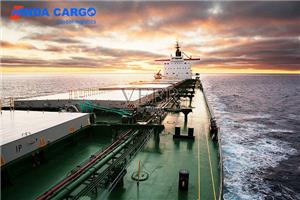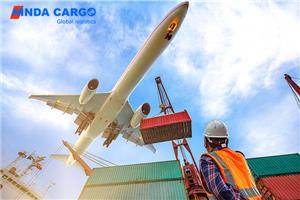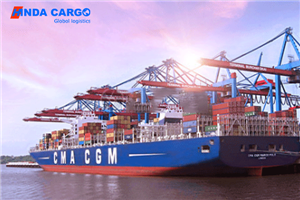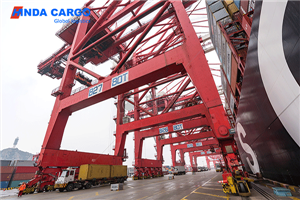Trade cooperation among countries along the Belt and Road
As an important node of the "Belt and Road", West Asian countries can consolidate and strengthen their hub status in the economic and trade exchanges between Asia, Europe and Africa, which is very important for the upgrading of traditional commodities and personnel hubs such as the United Arab Emirates. At the same time, West Asian countries can also become a base for cooperation in related industries represented by energy, and can effectively exert their advantages through the “Belt and Road” initiative and consolidate their own global status.
Next, we will sort out the development status of investment cooperation and trade exchanges between my country and West Asia.
Economic Development Status of West Asian Countries
The total area of West Asia is about 7.18 million square kilometers, accounting for 16% of the total area of Asia, and it has rich oil resources. Countries along the “Belt and Road” West Asia region include Turkey, Iran, Syria, Iraq, United Arab Emirates, Saudi Arabia, Qatar, Bahrain, Kuwait, Lebanon, Oman, Yemen, Jordan, Israel, Palestine, Armenia, Georgia, Azerbaijan, Egypt, a total of 19 countries .
West Asia is known as the "treasure house of oil in the world". It is the region with the most abundant oil reserves, the largest output and the largest export volume in the world. More than 90% of the oil produced is exported, mainly to the United States, Western Europe and Japan. The industrialization level of most West Asian countries is relatively low, the level of scientific and technological development is average, and the processing and manufacturing of machinery and equipment, textiles, and daily necessities manufacturing are underdeveloped. At the same time, West Asia is the main channel for cultural exchanges between the East and the West. The Strait of Hormuz and the Strait of Mandeb are the communication links between the Atlantic Ocean and the Indian Ocean, and have a very important strategic position.
At present, countries in the West Asian region have not yet formed a good hydropower transmission network, which leads to countries lacking water and power often facing problems such as water shortage and power shortage. The problems of unbalanced layout and imperfect construction of transportation modes, low coverage of communication facilities, limited port operation capacity, and insufficient air lines to radiate the world are also problems in the infrastructure of West Asian countries, which seriously restrict the development of the domestic economy.
Turkey
Turkey's main imported products are mineral fuels, mineral oils and their products, asphalt, etc.; nuclear reactors, boilers, mechanical appliances and parts, electrical motors, electrical, audio-visual equipment and their spare parts; steel; vehicles and their spare parts, except for railway vehicles; plastics and its products. The main export products include vehicles and their spare parts, excluding railway vehicles; nuclear reactors, boilers, machinery and parts; knitted or crocheted clothing and clothing accessories.
Syria
Syria's industrial base is weak, and modern industry is only a few decades old. Existing industries are divided into extractive industry, processing industry and hydropower industry. Extractive industries include oil, natural gas, phosphate, marble, etc. The processing industries mainly include textile, food, leather, chemical industry, cement, tobacco and so on. At the same time, "green gold" olives, together with "yellow gold" wheat and "white gold" cotton, are the three major crops in Syria.
The areas that attract foreign direct investment include oil, natural gas, phosphate, rock salt, asphalt, etc. The proven oil reserves are 2.5 billion barrels, and the oil and its products are basically self-sufficient, and some are exported. The proven natural gas reserves are 650 billion cubic meters, the phosphate reserves are 650 million tons, and the rock salt reserves are 55 million tons.
Syria mainly imports electromechanical, audio-visual equipment and its parts, accessories, base metals and their products, and plant products from my country. Export textile raw materials and textile products, mineral products, plant products, etc. to my country. The main Chinese-funded enterprises that carry out cooperative business in Syria include PetroChina, Sinopec, Sinopec Tenth Construction Company, China Textile, Sinoma Construction, North Company, Hubei Hongyuan Electric Power, ZTE, Huawei, and Sichuan Machinery and Equipment Company.
Georgia
Georgia is rich in natural resources, mainly forests, minerals and water resources. The forest area accounts for 38.5% of the national land area, and the total timber reserves are 420 million cubic meters, mainly including beech, pine, cherry and walnut. The main minerals are manganese, copper, iron, lead and zinc, among which there is the world-famous "Qiatula" manganese mining area. The proven manganese ore reserves of this mine are 234 million tons, and the mineable volume is 160 million tons. Some manganese ore is of high grade. It is rich in water power resources, and its mineral water is well-known in the CIS and Central and Eastern European countries; it has 319 large and small rivers, and the theoretical reserves of hydropower resources are 15.6 million kilowatts, making it one of the countries with the most abundant hydropower resources per unit area in the world.
Jordan
Jordan's main imports include petroleum products, automobiles/motorcycles and spare parts, steel, grains, equipment and tools, and electronic products. Its main exports include clothing, potash fertilizers, vegetables and fruits, pharmaceuticals, and fertilizers.
Iraq
Iraq's main imported products include various means of production, food and other daily necessities. Crude oil, natural gas, date palms, and chemical fertilizers are the main export products.
At present, Chinese-funded enterprises stationed in Iraq include PetroChina, CNOOC, Oasis, Shanghai Electric, CNBM, Huawei Technologies Co., Ltd., ZTE Corporation, Suzhou Sinoma, and Hangzhou Santai, most of which are located in Kurdish northern Iraq. Stan region, Wahit province in the southeast, Basra province in the south.
Iran
In 2015, affected by factors such as sluggish global economic growth and the continued slump in crude oil and other commodity prices, China-Iran economic and trade cooperation declined. From January to November, the bilateral trade volume reached US$31.09 billion, down 34.6% year-on-year; among which, exports to Iran were US$16.18 billion, down 26.6% year-on-year, and imports from Iraq were US$14.91 billion, down 41.6%. my country imported 24.36 million tons of crude oil from Iraq, accounting for 8% of China's total imports from the world. The value of my country's newly signed engineering contracts in Iraq was 1.28 billion US dollars, a year-on-year decrease of 59.4%.
my country's direct investment in Iran mainly includes: oil and natural gas, water conservancy, petrochemical industry, infrastructure construction, machinery, light industry, agriculture, tourism and transportation tool manufacturing. The main investment projects include: the equipment production project invested and constructed by Changshu Danieli Metallurgical Equipment Co., Ltd. in Isfahan, Iran; the valve production plant invested and constructed by Suzhou Valve Factory in Iran; the Kuma Mining jointly established by Shandong Weifeng Mining in Iran Co., Ltd.; North Industries Corporation, Changchun Passenger Car Factory and Tehran Urban-Rural Railway Company jointly assemble subway passenger cars and Volkswagen Ceramics Factory invests in the production of ceramic tiles in Mashhad.
Saudi Arabia
At present, my country has become the largest trading partner of Saudi Arabia in the non-oil industry. From January to November 2015, the trade volume between China and Saudi Arabia was 47.66 billion US dollars, of which my country's export was 19.75 billion US dollars, and its import from Saudi Arabia was 27.91 billion US dollars, a year-on-year decrease of 38.2%. During the same period, my country imported 46.09 million tons of crude oil from Saudi Arabia, accounting for 15% of China's total imports from the world. From January to November 2015, the value of newly signed contract projects by Chinese enterprises was US$5.37 billion, a year-on-year decrease of 38%. At present, there are more than 100 Chinese-funded companies in Saudi Arabia, whose business involves petrochemical, railway, housing construction, port, power station, communication and other fields.
United Arab Emirates
At present, there are more than 300 companies established by my country in the UAE, mainly in Dubai (180), Sharjah (110) and Abu Dhabi (20). Most companies are engaged in commodity trading, and very few are engaged in production operations. The investment method is mainly private direct investment, most of which are small in scale. The relatively large ones have several trade centers. In terms of productive projects, Chinese companies still lack sufficient understanding of the UAE's investment environment and investment fields. To change the single oil economy, the UAE is vigorously encouraging foreign investment and developing local industries to diversify its economy and income.
Bahrain
my country's exports to Bahrain are mainly mechanical and electrical products, steel, textiles and clothing, etc., and the main imports from Bahrain are iron ore, aluminum, liquefied petroleum gas, etc. In the field of non-oil trade, my country is the second largest partner of Pakistan after Saudi Arabia, and the largest source of non-oil trade imports to Pakistan. At present, there are 6 Chinese-funded institutions in Pakistan, namely Huawei Technologies, ZTE, China Construction, China Hong Kong, Bank of my country, and Shenyang Yuanda. Another Chinese set up 6 private trading companies and 4 restaurants.
Oman
Oil is the pillar industry of Oman's economy. 43% of the country's GDP comes from the oil industry, and 70% of its fiscal revenue comes from oil revenue. Major imports include machinery and transport equipment, manufactured goods, food and live animals, while major exports include oil and liquefied natural gas. Re-exports are also an important part of Oman's exports.
Yemen
Yemen's economic development mainly depends on oil export revenue, benefiting from high oil prices in the international market. The government attaches great importance to the exploration and exploitation of oil, and tries to overcome economic difficulties by developing oil and mineral resources. The main imported products include transportation tools, machinery and equipment and other materials needed for domestic construction, as well as a large number of light industrial products. The main export products include petroleum, cotton, coffee, tobacco leaves, spices and seafood.
Lebanon
Lebanon has few mineral resources and is not exploited much. The industrial base is relatively weak, and the processing industry is the mainstay. The main imported products are mineral products, mechanical appliances, electrical equipment and their parts, chemicals and related industrial products, etc. In the first quarter of 2015, the main sources of Li's imports were China, Italy, Germany, France, and Russia. The main export products are food, beverages and tobacco, pearls, precious stones and precious metals, machinery and appliances, electrical equipment and their parts, etc., mainly exported to Saudi Arabia, the United Arab Emirates, Iraq, South Africa and Syria.
Qatar
Oil and natural gas are the backbone of Qatar's economy. In recent years, the government has invested heavily in the development of natural gas, making it a top priority for economic development, and Qatar is the world's largest producer and exporter of LNG.
Azerbaijan
At present, Azerbaijan still relies on the petroleum industry to support the national economy. The export value of petroleum and petroleum products accounts for 89.48% of the total export value. Mechanical and electrical products and daily consumer goods still mainly rely on imports. Foreign investment in Azerbaijan's social and economic fields also mainly flows into the oil and gas field.
my country is the thirteenth largest trading partner of Azerbaijan and the fifth largest source of imports, and the number of projects contracted in Azerbaijan




